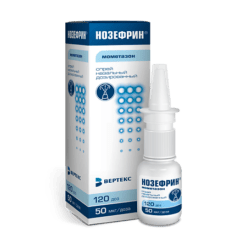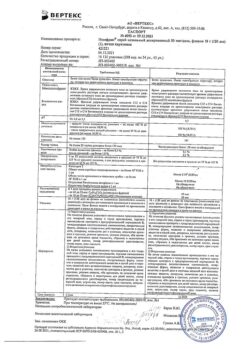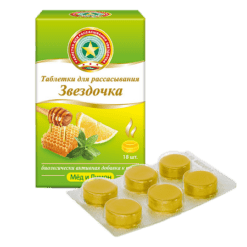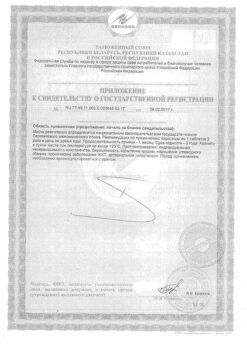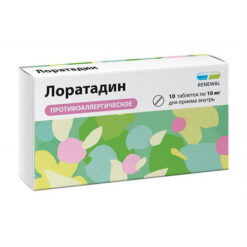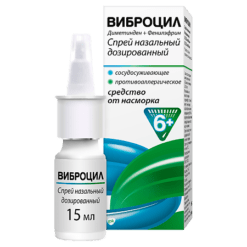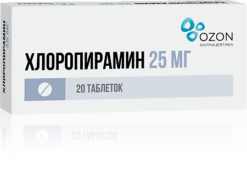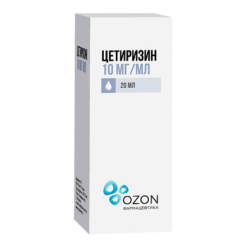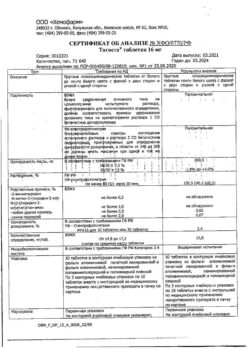No products in the cart.
Xylong, spray 0.1 mg+5 mg/dose 15 ml
€7.74 €6.77
Description
Xylometazoline belongs to the group of local vasoconstrictors (decongestants) with alpha-adrenomimetic activity, causes narrowing of the blood vessels of the nasal cavity mucosa, restores the patency of nasal passages, facilitates nasal breathing. The action of the drug usually comes within a few minutes after application and lasts up to 10 hours.
Dexpanthenol is a vitamin of group B – a derivative of pantothenic acid.
Dexpanthenol is converted by the body into pantothenic acid, which is part of coenzyme A (Co-A) and is involved in the processes of acetylation, carbohydrate and fat metabolism, the synthesis of acetylcholine, corticosteroids, porphyrins; It stimulates skin and mucous membranes regeneration, normalizes cell metabolism, accelerates mitosis and increases collagen fibers strength.
It has regenerative, metabolic and mild anti-inflammatory effect.
Pharmacokinetics
Xylometazoline is almost not absorbed during topical application and its concentration in plasma is so low that it cannot be determined by modern analytical methods.
Dexpanthenol when applied topically is quickly absorbed by skin and converted into pantothenic acid, binds to plasma proteins (mainly beta-globulin and albumin). Its concentration in blood is 0.5-1 mg/l, in blood serum – 100 µg/l.
Pantothenic acid is not metabolized in the body (except for inclusion in Co-A) and excreted unchanged.
Indications
Indications
Used for acute respiratory diseases with symptoms of rhinitis, acute allergic rhinitis, vasomotor rhinitis, sinusitis, otitis media (as part of combination therapy to reduce swelling of the nasopharyngeal mucosa), to facilitate rhinoscopy, restore impaired nasal breathing; after surgical interventions in the nasal cavity.
Pharmacological effect
Pharmacological effect
Pharmacodynamics
Xylometazoline belongs to the group of local vasoconstrictors (decongestants) with alpha-adrenomimetic activity, causes constriction of the blood vessels of the nasal mucosa, restores the patency of the nasal passages, and facilitates nasal breathing. The effect of the drug usually occurs within a few minutes after its use and lasts up to 10 hours.
Dexpanthenol is a B vitamin and is a derivative of pantothenic acid.
Dexpanthenol is converted in the body into pantothenic acid, which is an integral part of coenzyme A (Co-A) and is involved in the processes of acetylation, carbohydrate and fat metabolism, in the synthesis of acetylcholine, corticosteroids, porphyrins; stimulates the regeneration of skin and mucous membranes, normalizes cellular metabolism, accelerates mitosis and increases the strength of collagen fibers.
It has a regenerating, metabolic and mild anti-inflammatory effect.
Pharmacokinetics
When applied topically, xylometazoline is practically not absorbed; plasma concentrations are so low that they cannot be determined by modern analytical methods.
When applied topically, dexpanthenol is quickly absorbed by the skin and converted into pantothenic acid and binds to plasma proteins (mainly beta-globulin and albumin). Its concentration in the blood is 0.5-1 mg/l, in the blood serum – 100 μg/l.
Pantothenic acid is not metabolized in the body (except for inclusion in Co-A) and is excreted unchanged.
Special instructions
Special instructions
Before use, it is necessary to clean the nasal passages. The duration of use of the drug in children is determined after consultation with a doctor.
Impact on the ability to drive vehicles and machinery
When using the drug in accordance with these instructions for use, the drug does not affect the ability to drive vehicles or machines, however, if adverse events occur, you should refrain from performing these types of activities.
Active ingredient
Active ingredient
Xylometazoline, [Dexpanthenol]
Composition
Composition
Per dose:
Active ingredients:
xylometazoline hydrochloride – 0.100 mg,
dexpanthenol – 5,000 mg.
Excipients:
sodium citrate dihydrate – 0.509 mg,
sodium chloride – 0.250 mg,
hypromellose – 0.100 mg,
benzalkonium chloride – 0.015 mg,
citric acid monohydrate – 0.350 mg,
purified water up to 100 µl.
Pregnancy
Pregnancy
The use of the drug during pregnancy and breastfeeding is contraindicated.
Contraindications
Contraindications
Hypersensitivity to the components of the drug, arterial hypertension, tachycardia, severe atherosclerosis, hyperthyroidism, glaucoma, atrophic rhinitis, dry rhinitis, porphyria, prostatic hyperplasia, surgical interventions on the meninges (in history), simultaneous use with monoamine oxidase inhibitors (MAO) and tricyclic antidepressants, pregnancy, breastfeeding, children up to 6 years old.
With caution
Diabetes mellitus, pheochromocytoma, diseases of the cardiovascular system (including coronary heart disease), increased sensitivity to the action of adrenergic drugs, accompanied by insomnia, dizziness, arrhythmia, tremor, increased blood pressure.
Side Effects
Side Effects
Adverse events presented below are listed depending on the anatomical and physiological classification and frequency of occurrence.
The frequency of occurrence is defined as follows: very common (≥1/10), common (≥1/100 to <1/10), uncommon (≥1/1000 to <1/100), rare (≥1/10000 to <1/1000), very rare (<1/10000), frequency unknown (cannot be estimated from available data).Nervous system disorders:
Very rare: anxiety, insomnia, headache, fatigue (drowsiness), hallucinations (mainly in children).
Cardiovascular system disorders:
Rarely: palpitations, tachycardia, increased blood pressure.
Very rare: arrhythmia
Respiratory system disorders:
Very rare: swelling of the nasal mucosa, hypersecretion, nosebleeds.
Frequency unknown: burning and dryness of the nasal mucosa, sneezing.
Disorders of the musculoskeletal system:
Very rare: seizures (especially in children).
Immune system disorders:
Very rare: allergic reactions (angioedema, skin rash, itching).
If any of the side effects indicated in the instructions get worse, or you notice any other side effects not listed in the instructions, tell your doctor.
Interaction
Interaction
Concomitant use of MAO inhibitors and tricyclic antidepressants may lead to an increase in blood pressure due to the effects of these drugs on the cardiovascular system.
Overdose
Overdose
In cases of overdose or accidental oral use, the following symptoms may occur: mydriasis, nausea, vomiting, cyanosis, fever, convulsions, tachycardia, cardiac arrhythmias, vascular insufficiency, cardiac arrest, hypertension, pulmonary edema, respiratory dysfunction, hallucinations.
Patients may also experience symptoms of central nervous system depression, including drowsiness, decreased body temperature, bradycardia, shock, respiratory arrest, and coma.
Treatment.
The use of activated carbon, gastric lavage, oxygen ventilation. To lower blood pressure, 5 mg of phentolamine in 0.9% sodium chloride solution is prescribed by slow intravenous administration or 100 mg of phentolamine orally.
Vasoconstrictor drugs are contraindicated. If necessary, antipyretic and anticonvulsants are used.
Storage conditions
Storage conditions
At a temperature not higher than 25°C.
Keep out of the reach of children.
Shelf life
Shelf life
25 months
Manufacturer
Manufacturer
Pharmstandard-Leksredstva, Russia
Additional information
| Shelf life | 25 months. |
|---|---|
| Conditions of storage | At a temperature not exceeding 25 ° C. Keep out of reach of children. |
| Manufacturer | Pharmstandard-Leksredstva, Russia |
| Medication form | dosed nasal spray |
| Brand | Pharmstandard-Leksredstva |
Related products
Buy Xylong, spray 0.1 mg+5 mg/dose 15 ml with delivery to USA, UK, Europe and over 120 other countries.


